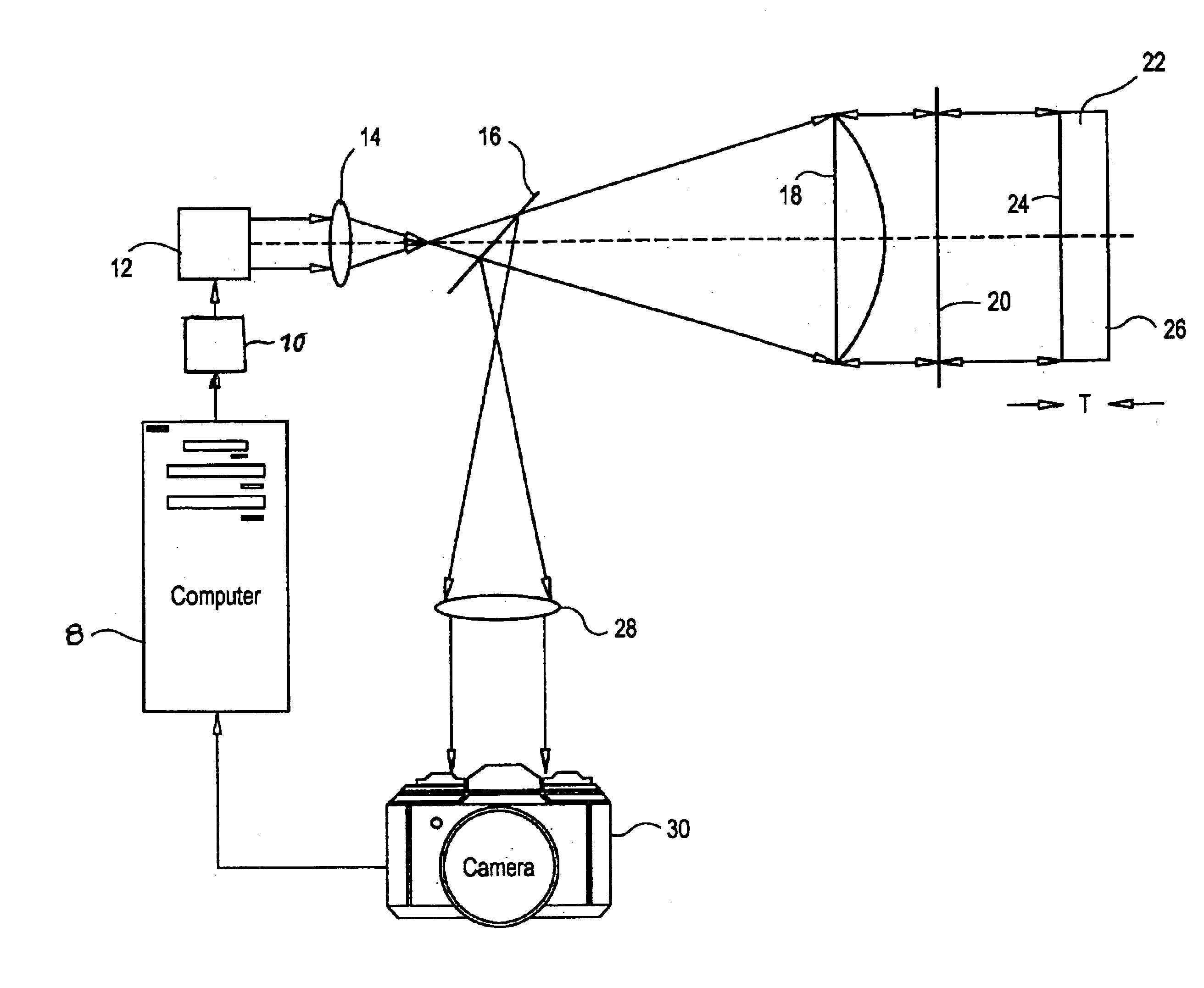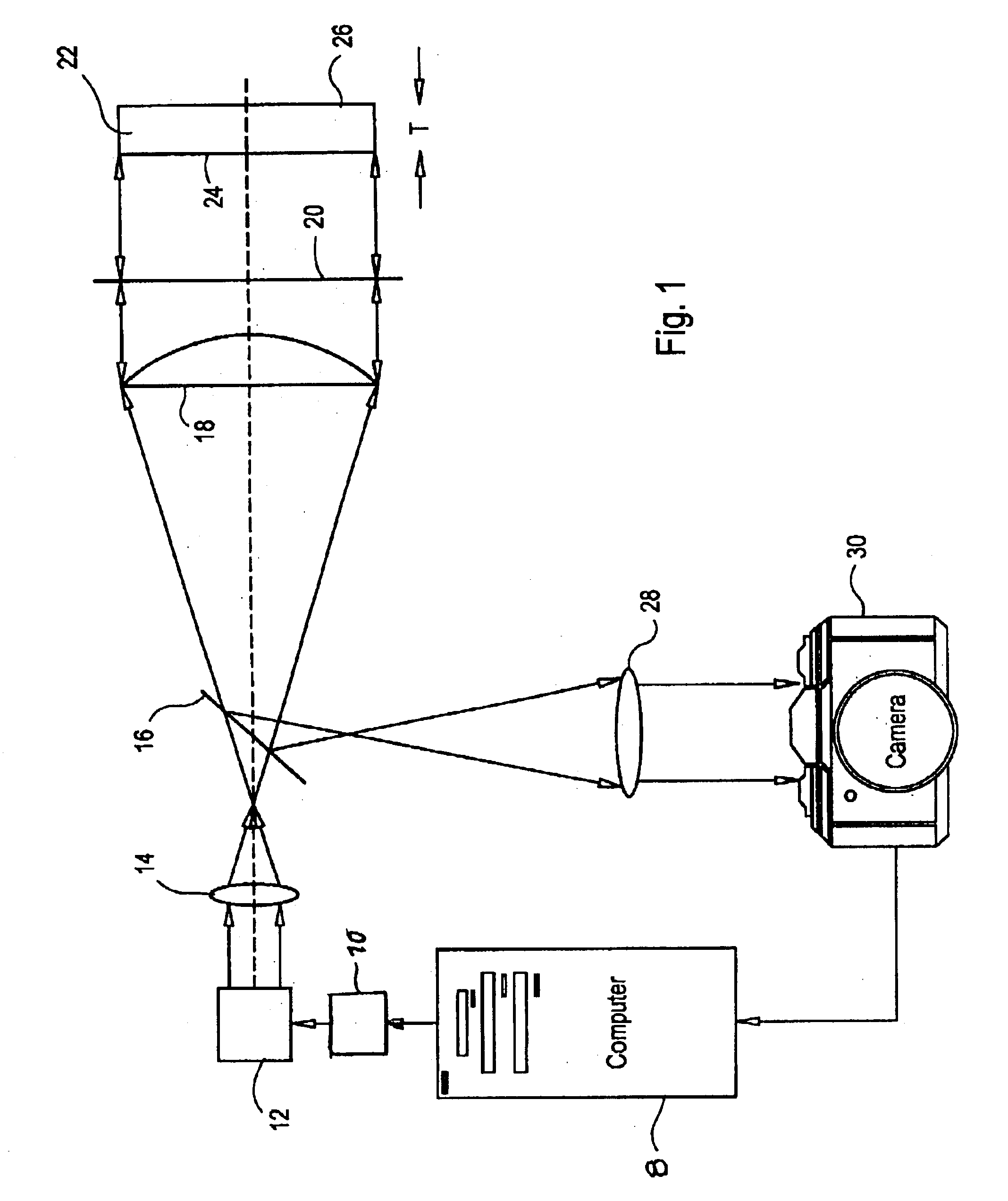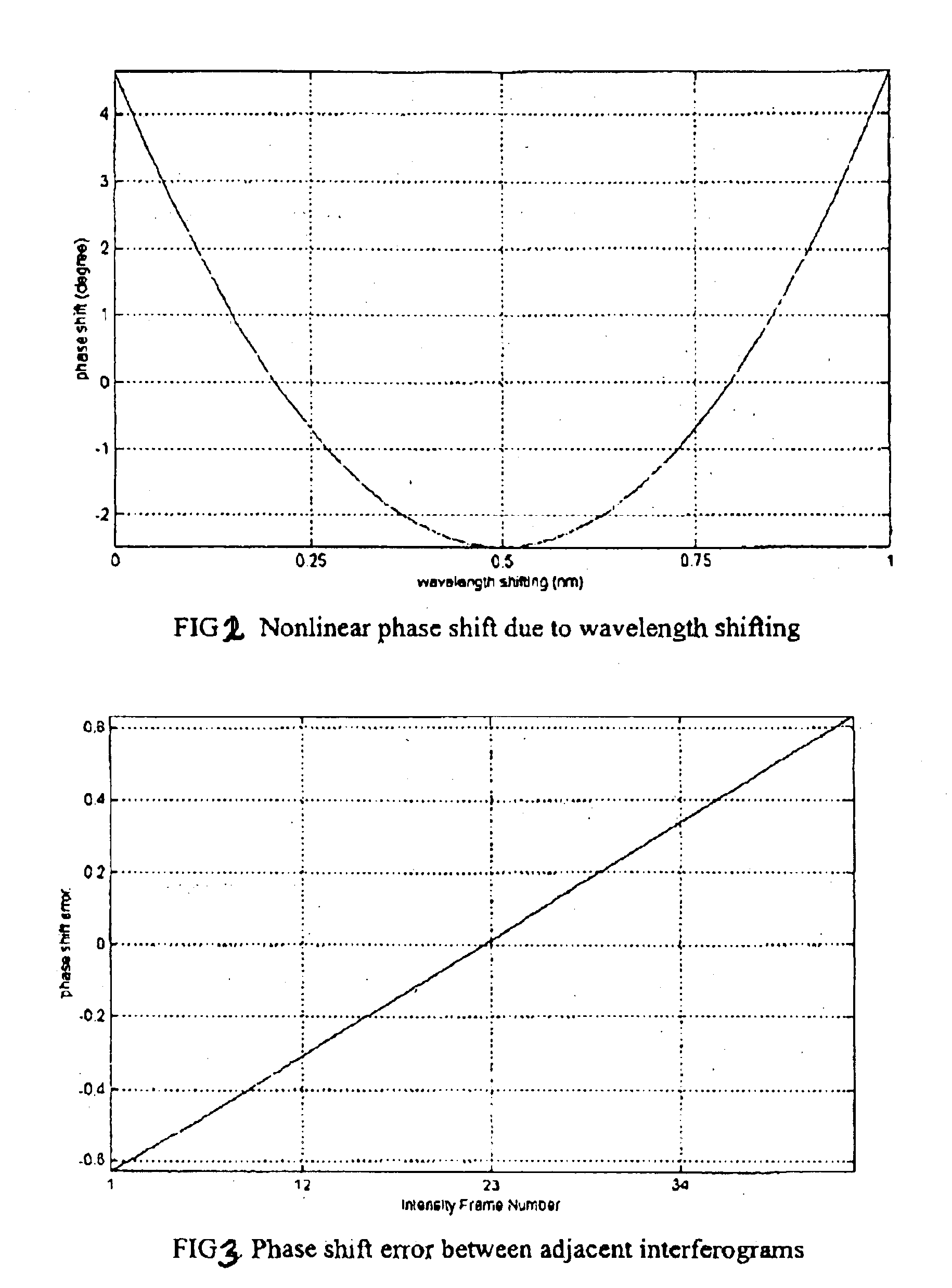Non linear phase shift calibration for interferometric measurement of multiple surfaces
a multi-surface, phase shift calibration technology, applied in the field of interferometric profilometry, can solve the problems of insignificant errors, algorithm can be devised, and the psi of parallel plane objects cannot employ the production of the desired phase shift, so as to achieve the effect of effective calibration of inpu
- Summary
- Abstract
- Description
- Claims
- Application Information
AI Technical Summary
Benefits of technology
Problems solved by technology
Method used
Image
Examples
Embodiment Construction
Reference now should be made to the drawings, which illustrate the implementation of a preferred embodiment of the invention in conjunction with an unequal path length interferometer. It should be noted that the optics which are employed in the implementation of the preferred embodiment of the invention are known; and these optics have been utilized, with varying degrees of success, for surface profiling of single and multiple surface objects in PSI systems.
The preferred embodiment of the method of the invention is illustrated as used in conjunction with an unequal path length interferometer in the form of the Fizeau interferometer of FIG. 1. It should be noted, however, that other unequal path length interferometers may also be used, such as a Twyman-Green interferometer. Such interferometers simultaneously extract phases of all of the individual interferograms from an set of intensity frames and record superimposed interferograms generated with wave fronts reflected from multiple ...
PUM
 Login to View More
Login to View More Abstract
Description
Claims
Application Information
 Login to View More
Login to View More - R&D
- Intellectual Property
- Life Sciences
- Materials
- Tech Scout
- Unparalleled Data Quality
- Higher Quality Content
- 60% Fewer Hallucinations
Browse by: Latest US Patents, China's latest patents, Technical Efficacy Thesaurus, Application Domain, Technology Topic, Popular Technical Reports.
© 2025 PatSnap. All rights reserved.Legal|Privacy policy|Modern Slavery Act Transparency Statement|Sitemap|About US| Contact US: help@patsnap.com



